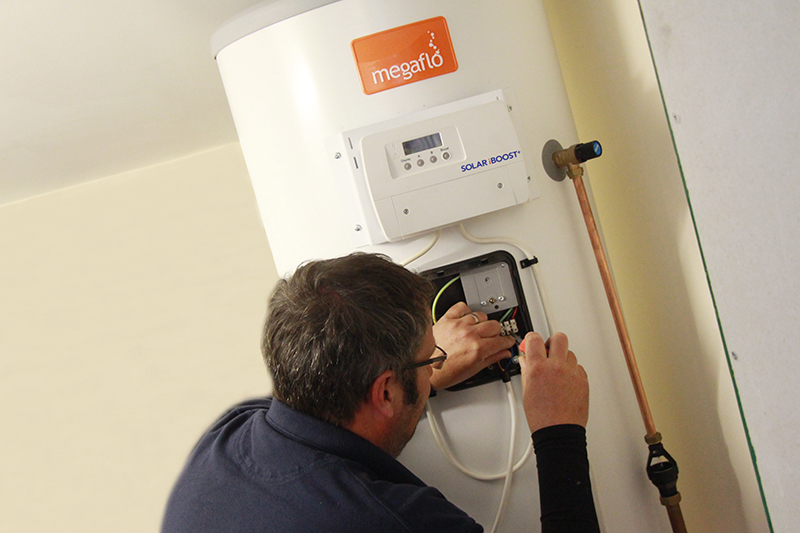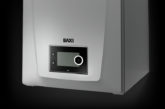
Not all cylinders are serviced annually, even though it is a crucial part of maintaining the ongoing product warranty. George Linder, Product Manager at Heatrae Sadia, outlines the areas of focus when carrying out a Megaflo unvented cylinder inspection and service.
Check the key components
A key part of the routine maintenance check should include making sure the safety valves operate correctly and water can flow freely through. In order to check the movement of the water, manually operate the pressure relief valve for a few seconds, the water should flow freely through the tundish and discharge pipework.
The valve should also reseat correctly once it’s released. This procedure can then be repeated to check the expansion relief valve is also working as it should be. When carrying out this service, if the internal tank needs inspecting too then this can be done through the immersion heater boss.
If the immersion heater needs to be removed and replaced, careful attention must be paid to ensure that the tank is not damaged. Using the wrong tools and methods could mean ripping the immersion boss off the top of the tank, or potentially cause leaks from the immersion boss.
Clear the strainer
To clear the strainer of any debris, the isolating valve prior to the pressure reducing valve or main stop cock to the system must be turned off. Following this, the lowest hot tap in the system can be turned on to relieve any pressure build up. Using a spanner, unscrew the pressure reducing cartridge and remove the moulded housing. The strainer is within the cartridge so this can be taken out and placed under running water to remove any particulate matter.
Descale the immersion heater
Particularly important in hard water areas, descaling can help to extend the life of a cylinder and improve performance. Before carrying out this work, turn off the mains water supply, isolate the electrical supply and turn the boiler off. A hosepipe should then be attached to the drain cock, which will take the water to a suitable discharge point and open a hot tap close to the unit to drain it. Once the cylinder is drained, the covers to the immersion heater can be opened to allow the immersion heater thermostat to be disconnected. To lift the immersion heater out, simply unscrew it and carefully lift it out so that any scale can then be removed.
Take extra care to ensure the sealing surfaces are clean and undamaged, if in doubt a new immersion gasket should be fitted. Finally, replace the heater while making sure the immersion heater gasket isn’t trapped. Rewire, check, close and secure the housing cover to finish the process.
Recharge the expansion volume
The air volume within a cylinder should periodically be recharged to accommodate for expanded water. If water is intermittently flowing from the expansion valve then this indicates that the air volume has reduced so much so that it cannot accommodate expansion.
To recharge, the heat source to the cylinder must be turned off as well as the water supply. This can be done by turning the isolating valve on either the pressure reducing valve or expansion valve. On a Megaflo cylinder, the blue handle needs to be turned so it is positioned at a 90-degree angle to the flow of the water. Following this, open the lowest hot tap supplied by the cylinder and hold open the temperature and pressure relief valves. This can be done by twisting the knob on top of the valve until the water stops and the gurgling sound at the valve stops.
Now the pressure and temperature relief valves can be closed by releasing the knob, and the isolating valve can be turned on by turning the blue handle until it runs parallel with the water flow. Once water is flowing from the hot tap again, it can be turned off. The air volume will now be recharged as the cylinder refills.
Servicing reminders
Not all homeowners are aware that a cylinder requires an annual inspection. However, as a cylinder is a pressurised system, it does require regular maintenance by a G3 qualified engineer.
A service will ensure the continued optimum performance of unvented cylinders. This is of particular importance in hard water areas or where the water supply contains particulate matter.
On completion of any maintenance or service, the Benchmark Installation, Commissioning and Service Record should be filled in to record the actions taken and the date the work was undertaken.













